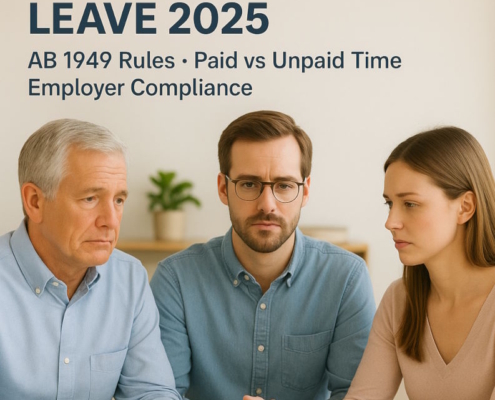How are a 1099 contractor and an employee different?
When would it be more appropriate for your company to use 1099 rather than W-2 employees? Misclassification may lead to heavy fines, so it’s important to do it properly.
The IRS uses several forms for reporting different types of workers; for example, “1099” workers are considered independent contractors, while “W-2” workers are considered employees. Giving someone a 1099 form isn’t enough to ensure they’re in the correct category, though.
Whether an employee qualifies as an independent contractor under federal and state law will determine whether their tax return is a W-2 or a 1099. Determining whether an employee is eligible for a certain benefit or law requires the application of several tests.
Here we will take a deeper look at the distinction between the two worker types and provide an outline of some of these tests.
In what ways do W-2 and 1099 workers differ?
When it comes to work and taxes, freelancers and independent contractors are very different from regular employees.
W-2 employees
Hiring a W-2 employee usually means they will be on the books for as long as the company needs them to carry out their regular task. Their paychecks have taxes deducted and sent to the appropriate federal and state agencies. In addition to contributing to Social Security and Medicare for W-2 workers, organizations also pay employment taxes. Overtime pay, health insurance, and other benefits are also available to these employees under the law.
Common types of W-2 employees include:
Employees, customer service representatives, and others who work by the hour
Those who work for the company and receive a salary to carry out their regular duties
Senior leaders and managers across the company
1099 workers
In contrast, a 1099 worker is an independent contractor that manages their own business and frequently collaborates with a wide variety of clients. They pay their own way when it comes to company expenses and must file and pay their own taxes. They are not eligible for any benefits or legal protections associated with work, and no employer may legally employ them.
Common types of 1099 workers include:
- Creatives working independently in fields including photography, writing, and design
- Experts providing a narrow or one-time service
- Independent contractors that operate on a project basis and may use digital tools to fulfill their work
- Independent contractors that work for other companies or temp agencies
What you need to know to make the right choice for your company
Take a closer look at the laws and regulations described more in-depth in the next sections when you’re evaluating whether a possible recruit should be a W-2 employee or an independent contractor. But there are other considerations that could help you choose the correct categorization up front, such as when you’re thinking about making a position and how you’ll put that person’s talents to use.
Important considerations are:
The quantity of labor needed: Is this a one-and-done task or do you require occasional access to this skill? Or do you see a constant flow of tasks that are typical for your kind of organization?
Access to skilled workers: Collaborating with a 1099 employee can provide you with access to scarce expertise in industries that struggle to recruit full-time workers. You might have to rethink how you work with that person because of this. Instead of having your IT department take full responsibility of a cybersecurity project, a consultant may instead create a program that they can then execute.
Compensation: Contractors and freelancers work on an as-needed basis, decide their own fees, and bear all financial risks associated with their work. Accounting for self-employment taxes, company expenditures, and other charges often results in an hourly or project rate that is greater. In contrast, the whole cost of employing a W-2 employee must be included, in addition to their base pay, bonuses, PTO, benefits, and employer’s portion of taxes.
Different tests for classifying employees as 1099 or W-2
Keeping these considerations in mind, you can consult the following agencies: the IRS, the DOL, the EEOC, and individual states to determine if a worker is an employee, a freelancer, or an independent contractor.
1. IRS employee categorization rules
To determine federal taxes, the IRS looks to common law principles. For the purpose of determining a worker’s proper categorization, the test falls into three main categories:
Management of behavior: As part of this consideration, they look at the service provider’s training and education programs, as well as the company’s ability to oversee and control their work.
Management of funds: This consideration takes into account the worker’s gain or loss, investments in equipment and space, and unreimbursed costs.
Kind of partnership: When analyzing the nature of the employment arrangements, it is important to consider factors such as the existence of a formal contract, the duration of the association, and the entitlement to employee-type incentives.
No single component may be used to make a categorization call under this test. The determination of whether a person is an employee or an independent contractor requires careful consideration of all relevant elements and any other appropriate tests. Evaluate the whole relationship, think about how much power you have, and make note of all the variables that went into making a decision.
Always play it safe and consider the worker an employee if in question. Another option is to use Form SS-8 to ask the IRS for an official determination. A decision from the IRS, though, can take months.
2. The Department of Labor’s economic reality test
The Department of Labor employs an economic reality test to ascertain whether employees are subject to the Fair Labor Standards Act and so entitled to certain safeguards regarding pay and time, such as the minimum wage and overtime.
According to this evaluation, the following elements are crucial:
- How crucial the provided services are to the operation of the principal’s company
- The relationship’s longevity
- The money that person has put into their own workspace and machinery
- The principal’s level of control and its nature
- The potential gains or losses that an individual might incur
- The degree to which one must use initiative, discernment, or forethought in order to succeed in a competitive market.
- How autonomously a company is structured and runs
- A policy on equal employment opportunity
In the absence of specific proof to the contrary, federal anti-discrimination statutes treat all workers as employees and provide them with certain rights. When determining whether a person is an employee or an independent contractor, the Equal Employment Opportunity Commission (EEOC) provides guidance documents that include considerations such as:
- The boss has the power to decide where, when, and how the person does their job.
- No special knowledge or experience is necessary for this task.
- Everything from tools to supplies and equipment is provided by the employer.
- This job is carried out at the location designated by the employer.
- The association between an employee and their employer is long-lasting.
- The employer retains the authority to delegate extra tasks to the employee.
- How long an employee works and what hours they work are both determined by their company.
- In this model, the worker receives payment based on the number of hours worked, not the agreed-upon cost of completing a specific assignment.
- Workers do not employ or compensate assistants.
- The worker’s job is an integral aspect of the employer’s daily operations.
- The employee is not running their own successful company or profession.
- Insurance, paid time off, and workers’ compensation are among perks that employees receive from their employers.
- Employers are required to withhold federal, state, and Social Security taxes from their employees since they are legally considered employees of the business.
- It is possible for the employer to fire the employee.
- In their minds, the two parties have established the conventional relationship between an employer and an employee.
Separate state-wide assessments for worker categorization
When compared to federal standards, certain state standards are more stringent and harder to meet. Some states’ eligibility requirements for benefits like unemployment insurance, wage and hour regulations, and others’ coverage are based on the “ABC test.”
Unless all three of the following conditions are satisfied, a worker must be regarded as an employee:
- Not having any control: The person is not directly following the company’s instructions when doing the work.
- Business is atypical: Working remotely or otherwise not in the traditional office setting, the employee completes tasks that are not essential to the operation of the company.
- Customarily engaged: In most cases, the employee is self-employed and performs duties similar to those of their employer in a recognized trade, vocation, or company.
Be careful to verify your state’s rules and regulations to make sure you’re in compliance, as the ABC test isn’t a standardized set of variables everywhere.
The consequences of incorrectly classifying a worker
Misclassifying an employee might result in crippling fines. Misclassification of an employee as a 1099 can result in penalties for the employer, including fines and penalties for unpaid employment taxes, as well as penalties for failing to pay employees at least the minimum wage and any overtime that may be required by federal or state law. The employer might be subject to criminal prosecution if the Department of Labor believes there was a purposeful misclassification or if there is a notable pattern of conduct. Affected employees may also be able to bring legal cases. Therefore, remaining compliant is important.































